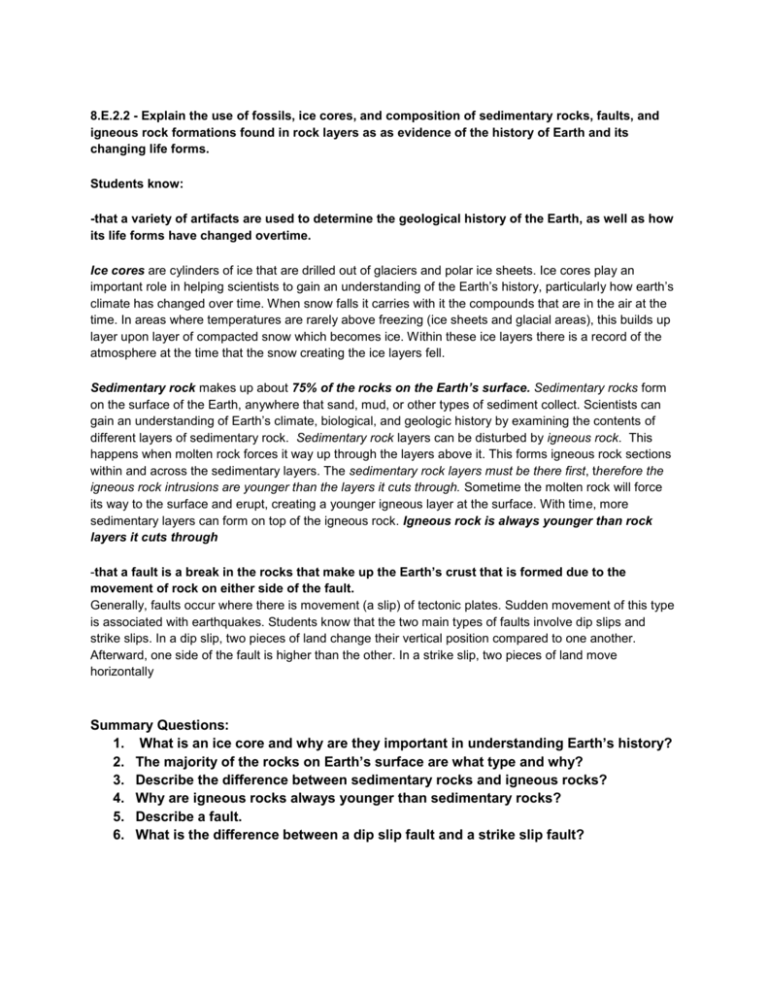File
advertisement

8.E.2.2 - Explain the use of fossils, ice cores, and composition of sedimentary rocks, faults, and igneous rock formations found in rock layers as as evidence of the history of Earth and its changing life forms. Students know: -that a variety of artifacts are used to determine the geological history of the Earth, as well as how its life forms have changed overtime. Ice cores are cylinders of ice that are drilled out of glaciers and polar ice sheets. Ice cores play an important role in helping scientists to gain an understanding of the Earth’s history, particularly how earth’s climate has changed over time. When snow falls it carries with it the compounds that are in the air at the time. In areas where temperatures are rarely above freezing (ice sheets and glacial areas), this builds up layer upon layer of compacted snow which becomes ice. Within these ice layers there is a record of the atmosphere at the time that the snow creating the ice layers fell. Sedimentary rock makes up about 75% of the rocks on the Earth’s surface. Sedimentary rocks form on the surface of the Earth, anywhere that sand, mud, or other types of sediment collect. Scientists can gain an understanding of Earth’s climate, biological, and geologic history by examining the contents of different layers of sedimentary rock. Sedimentary rock layers can be disturbed by igneous rock. This happens when molten rock forces it way up through the layers above it. This forms igneous rock sections within and across the sedimentary layers. The sedimentary rock layers must be there first, therefore the igneous rock intrusions are younger than the layers it cuts through. Sometime the molten rock will force its way to the surface and erupt, creating a younger igneous layer at the surface. With time, more sedimentary layers can form on top of the igneous rock. Igneous rock is always younger than rock layers it cuts through -that a fault is a break in the rocks that make up the Earth’s crust that is formed due to the movement of rock on either side of the fault. Generally, faults occur where there is movement (a slip) of tectonic plates. Sudden movement of this type is associated with earthquakes. Students know that the two main types of faults involve dip slips and strike slips. In a dip slip, two pieces of land change their vertical position compared to one another. Afterward, one side of the fault is higher than the other. In a strike slip, two pieces of land move horizontally Summary Questions: 1. What is an ice core and why are they important in understanding Earth’s history? 2. The majority of the rocks on Earth’s surface are what type and why? 3. Describe the difference between sedimentary rocks and igneous rocks? 4. Why are igneous rocks always younger than sedimentary rocks? 5. Describe a fault. 6. What is the difference between a dip slip fault and a strike slip fault?







